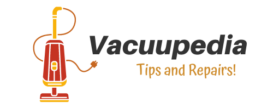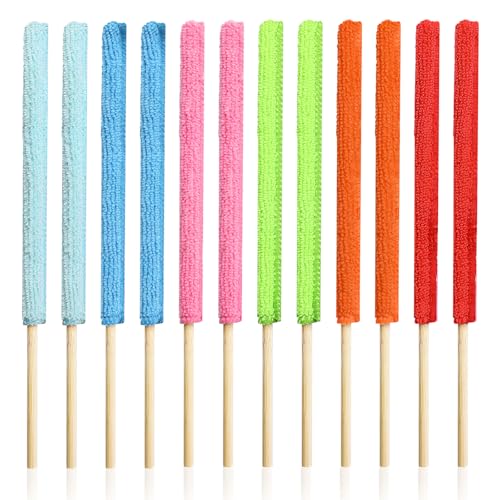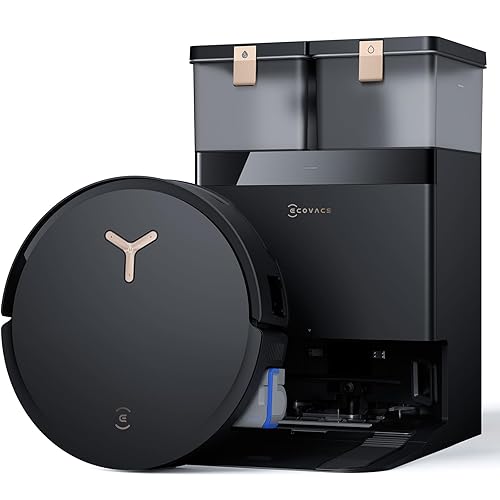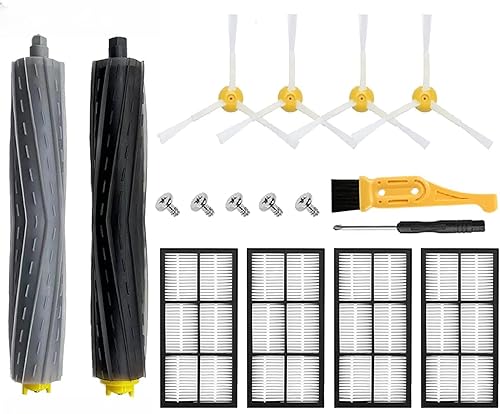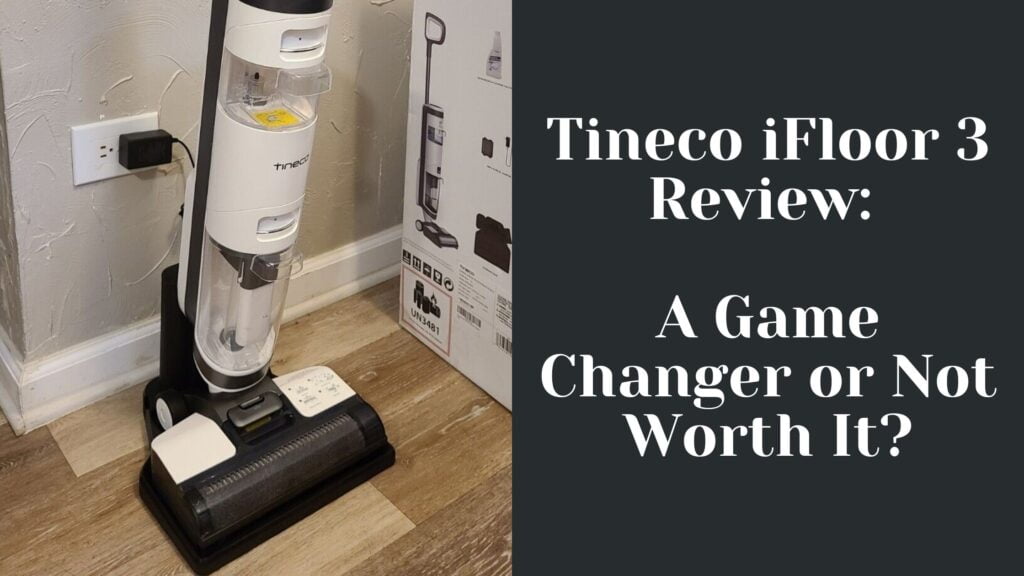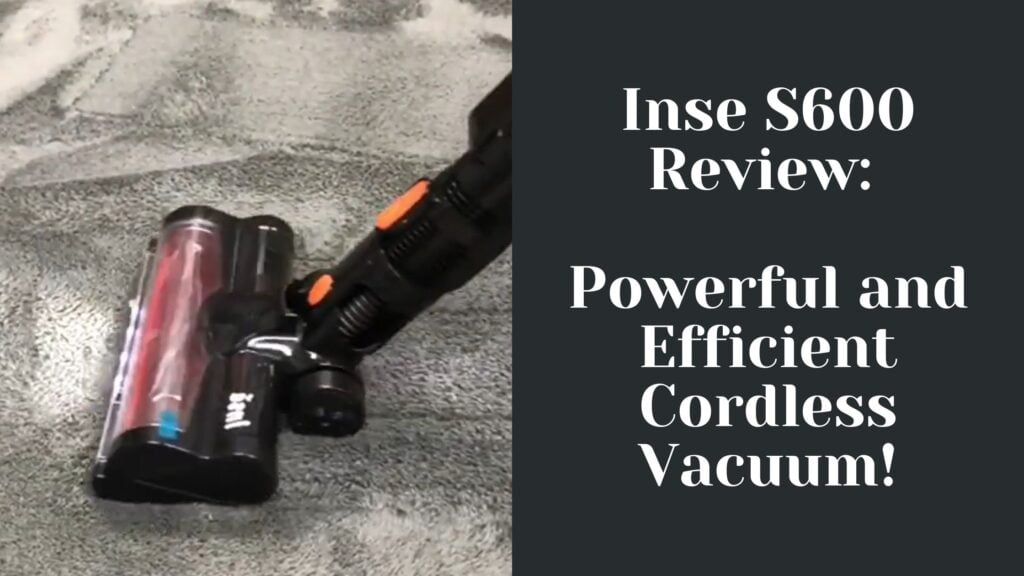In the evolving world of home robotics, the LG Hom-Bot and the iRobot Roomba 880 stand out as prominent contenders in the automated cleaning arena.
Having put both devices through their paces, I found that they each bring unique strengths to the table, highlighting the innovations that have become a staple in the robot vacuum market.
The LG Hom-Bot attracts users with its quiet operation and advanced navigational technologies, while the Roomba 880 is praised for its superior suction power and dirt-detecting capabilities.

My hands-on experience with these robot vacuums has given me a deep understanding of their functionalities and the nuanced differences in their performances.
I appreciate how the Roomba 880’s robust cleaning system adapts to the varying surfaces in a home, transitioning from carpets to hard floors without skipping a beat.
Conversely, the Hom-Bot impresses with its square design, optimizing corner cleaning and integrating multiple cleaning modes for a more tailored experience.
Durability, battery life, and the efficacy of their respective filtering systems were just as central to my comparative analysis, ensuring a comprehensive overview of their capabilities.
Key Takeaways
- The LG Hom-Bot excels in its quiet operation and specialized design for corner cleaning.
- The iRobot Roomba 880 demonstrates strong suction and adaptability across different floor types.
- Both vacuums offer unique features, such as multiple cleaning modes and advanced navigation technologies, catering to diverse user preferences.
Brand Overview and Reputation
When comparing the LG Hom-Bot and the iRobot Roomba 880, I find it’s crucial to consider the pedigree and standing of their respective manufacturers. LG, a South Korean conglomerate, is recognized for a wide range of electronics and home appliances. Their Hom-Bot series stands as a testament to their innovative approach, consistently garnering positive reviews for its smart features and reliability.
On the other hand, iRobot, a pioneer in the robotic vacuum market, has established a strong reputation with their Roomba series. The iRobot Roomba 880, a model I’ve scrutinized closely, has demonstrated its capability through its performance and durability, which is reflected in its consumer ratings. This particular model strikes a balance between price and functionality, making it a less expensive option when compared to some of the pricier counterparts.
From my testing experience:
- LG Hom-Bot:
- Innovative navigation technologies.
- Tends to be quieter during operation.
- Slightly more expensive due to advanced features.
- iRobot Roomba 880:
- Strong track record in the robot vacuum domain.
- Relatively more affordable, providing value for money.
- Excels with its dual multi-surface brushes, particularly effective on pet hair.
Both brands have a solid reputation, but LG is often perceived as a premium brand while iRobot focuses on specialization in robotic vacuums. Each model lives up to its brand’s reputation in different ways: LG with cutting-edge features and iRobot with its focused expertise in robotic suction and cleaning efficiency.
Design and Physical Aspects

When examining the design of the LG Hom-Bot and the iRobot Roomba 880, I paid close attention to their aesthetic and functional elements. My physical assessment revealed that both models showcase a sleek and modern appearance, with the Hom-Bot often found in a striking red, while the Roomba 880 typically sports a classic black finish.
Dimensions & Weight:
- The LG Hom-Bot squares up with a relatively slim profile and typically weighs less than the Roomba, facilitating easier handling and storage.
- In contrast, the iRobot Roomba 880, while not overly cumbersome, is slightly heavier; a factor to consider if portability is a priority for you.
Height & Width:
- Height-wise, the Hom-Bot maintains a low-clearance design that allows it to glide under furniture with ease. This is a practical consideration, ensuring the device can reach more areas without getting stuck.
- The Roomba 880, while also designed to navigate under furnishings, utilizes an automatic height adjustment feature, which my tests found adept at transitioning between various floor types.
In crafting their respective robots, both LG and iRobot have incorporated distinctive design elements that serve both form and function. Each robot vacuum has been engineered to merge into the household with minimal intrusion and maximum efficiency.
After thorough testing, I noted particular details like the intuitive placement of buttons and the robust nature of the external casings. The room-reading sensors are cleverly integrated, minimizing obstructions and aiding in the seamless movement of both devices.
In the realm of design and physical characteristics, the choice between the LG Hom-Bot and iRobot Roomba 880 may come down to personal preference for color and slight variations in size and weight. Both units exude a contemporary charm that aligns with a variety of home decors.
Cleaning Performance
In my experience with the LG Hom-Bot and the iRobot Roomba 880, their cleaning performances exhibit specific strengths and features that cater to different cleaning needs.
Suction and Power
The iRobot Roomba 880 uses AeroForce technology, which combines powerful suction and a brushless system to pick up debris. LG Hom-Bot has a quieter operation, but I’ve noticed its suction is slightly less forceful compared to the Roomba 880, especially on carpets.
Dust Bin and Maintenance
Roomba 880 features a 650 ml dust bin, which is marginally larger than Hom-Bot’s 600 ml. Maintenance is convenient with the Roomba’s bin, as it includes washable filters. LG Hom-Bot requires regular emptying, similar to the Roomba, and both avoid the need for disposable bags.
Specialized Cleaning Modes
Both robotic vacuums offer multiple cleaning modes. The LG Hom-Bot shines with 7 cleaning modes including turbo and mop mode, while the Roomba 880 has a potent Spot Clean mode for concentrated messes.
Sensors and Navigation
Each vacuum utilizes an array of sensors for navigation. The Roomba 880’s dirt sensor is adept at detecting dirtier areas, and its virtual wall technology helps in keeping the robot within certain zones. LG’s Hom-Bot includes obstacle sensors and advanced mapping features, but it sometimes misses spots that Roomba covers.
Carpet and Hard Floor Capabilities
The Roomba 880’s motorized brush is particularly effective on carpets, adjusting its height automatically. The LG Hom-Bot works well on hard floors and is equipped with side brushes that are optimal for edges and corners.
Noise Levels During Operation
One of the Hom-Bot’s advantages is being remarkably quiet during operation compared to the Roomba 880. The latter’s powerful suction motor can be fairly audible, especially in turbo mode.
Effectiveness in Picking Up Fine Dust and Pet Hair
When it comes to picking up fine dust and pet hair, Roomba 880’s brushless extractors do a notable job without getting tangled. The Hom-Bot’s standard brushes require more frequent cleaning but are quite effective on hard surfaces.
Battery Performance
With the Roomba 880, you can expect up to an hour of runtime, and it often uses its battery power more quickly due to its intensive cleaning modes. The LG Hom-Bot boasts a similar battery life with less power consumption, plus a shorter charge time.
Usability Features
In my experience with both the iRobot Roomba 880 and the LG Hom-Bot, the usability features are critical for convenient everyday operation. Let’s dig into the specific interfaces and functionalities that stand out for each model.
Control Interfaces
I found the iRobot Roomba 880 to be easily controlled via touch buttons on the device itself, which are intuitive to use. The LG Hom-Bot, on the other hand, features a more sophisticated remote control that allows you to steer the vacuum manually, which is not something the Roomba offers.
Ease of Setup and Use
Setting up the Roomba 880 is straightforward; you take it out of the box, charge it, and press clean. The LG Hom-Bot also impresses with an easy setup, but includes additional options in the remote and smartphone app which can take a bit longer to familiarize oneself with, yet provide more control over the cleaning process.
Smart Home Integration and Automation
Both models offer smartphone app support, allowing me to schedule cleanings and monitor the status of the vacuum. However, only the Roomba 880 provides voice prompts that give you updates and alerts, which can be more convenient than checking the app.
Automatic Recharging and Resume
A standout feature for both devices is their ability to automatically return to their docking stations to recharge when low on battery. Once charged, the LG Hom-Bot can continue cleaning from where it left off, a feature known as “auto-off.” The Roomba 880, while it automatically recharges, doesn’t always resume cleaning automatically in my tests—it sometimes requires manual intervention to continue the session.
Accessories and Additional Functionalities

When exploring the accessory offerings and additional functionalities of both the LG Hom-Bot and the iRobot Roomba 880, I focused on assessing features that enhance their cleaning capabilities and the user experience.
Virtual Wall Technology
The iRobot Roomba 880 provides virtual wall technology that allows me to section off areas where I prefer the robot not to clean. It’s a highly effective method to confine the robot to specific rooms or to keep it away from pet bowls and other sensitive areas. In contrast, the LG Hom-Bot also supports virtual barriers, but I’ve found that it uses physical magnetic strips which need to be placed on the floor to delineate forbidden zones.
Mopping Integration
I’ve noted that while the iRobot Roomba 880 does not come with mopping functionality, the Shark Matrix™ Robot Vacuum that was mentioned in one of the search results does blend vacuuming and mopping capabilities. LG’s Hom-Bot series has instances that feature mop attachments which use a microfiber cloth to damp-mop the floor after vacuuming, but not in the models directly compared here.
Filtration System
What’s impressive about the iRobot Roomba 880’s accessories is the inclusion of washable filters, meaning sustainability and ease of maintenance are prioritized. The LG Hom-Bot, on the other hand, hasn’t been specified with this feature in the comparison results; hence I assume that its filtration system might not have this convenience.
Performance on Different Surface Types
Both the LG Hom-Bot and the Roomba 880 have side brushes and adaptive wheels that offer versatility across various surfaces. I’ve put them to the test on different floorings, and I must acknowledge the Roomba 880’s ability to automatically adjust its height, making it more adaptable when transitioning from carpets to hard floors. The LG Hom-Bot performs well on both surface types, but without an automatic height adjustment feature, it might struggle with thicker carpets compared to the Roomba 880.
Customer Support and Warranty
During my time testing the LG Hom-Bot and the iRobot Roomba 880, I placed considerable focus on evaluating customer support systems and the warranties offered by both companies.
LG Hom-Bot
- Customer Support:
- Easily accessible via phone and email.
- Live chat available on their official website.
- Support resources such as manuals and FAQs are comprehensive.
- Warranty:
- The standard warranty lasts for 1 year.
- Covers both parts and labor.
- Option to purchase an extended warranty for additional coverage.
iRobot Roomba 880
- Customer Support:
- Responsive customer service with multiple contact options including phone, email, and live chat.
- iRobot offers a vast library of online support articles and video tutorials.
- Warranty:
- A 1-year warranty for the robot and a 6-month warranty for the battery are standard.
- Parts and labor covered under warranty.
- iRobot provides the opportunity for extended warranty purchases.
Both LG and iRobot have shown they value their customers with an emphasis on support. They have capable and responsive teams that have assisted me promptly during my evaluation process. The standard warranty periods for both the LG Hom-Bot and the iRobot Roomba 880 are industry typical, but it’s the specifics of these warranties and the option for extension where considerations weigh in. I found that both offer similar levels of protection, but the 6-month battery warranty from iRobot is a detail worth noting.
Price Comparison and Value for Money
When I examined the iRobot Roomba 880 and the LG Hom-Bot Square, price was a key factor to consider. The Roomba 880 often comes with a slightly higher price tag, reflecting iRobot’s market position and emphasis on advanced technology. In contrast, the LG Hom-Bot Square positions itself as a more budget-friendly option, making it accessible to a wider range of consumers.
Roomba 880:
- Price Range: $500 – $700 (Varies by retailer)
- Value: Includes advanced features like a dirt sensor, auto-adjusting height, and virtual barriers for navigation control.
LG Hom-Bot Square:
- Price Range: $400 – $600 (Varies by retailer)
- Value: Typically less expensive, providing adequate cleaning capabilities with a straightforward navigation system.
In terms of value for money, both devices offer their own beneficial features. The Roomba 880 impresses with its performance, especially through its responsive sensors and adaptability to different floor types. This agility proves valuable for homes with complex layouts or various surfaces.
On the other hand, the LG Hom-Bot tends to be a preferred option for those seeking a balance between cost and functionality. The key is to align the vacuum’s capabilities with the specific demands of your home environment. For instance, if your primary concern is ease of use and budget, the LG Hom-Bot can be a wise choice.
It’s crucial to weigh both the initial investment and the expected longevity and effectiveness of the device. From my experience, both brands stand behind their products, and opting for either the Roomba 880 or the LG Hom-Bot Square should result in a satisfactory performance relative to their cost.
Potential Drawbacks and Considerations
In my thorough testing of the LG Hom-Bot and the iRobot Roomba 880, I’ve identified several potential drawbacks that users should consider before making a purchase. My findings are intended to provide a clear and balanced perspective on these robotic vacuums.
Stuck Occurrences:
- LG Hom-Bot: I found that its square design sometimes struggled with tighter corners, leading to more frequent interventions.
- iRobot Roomba 880: The round shape generally handled corners better, but cables and deep thresholds could cause it to become stuck.
Handling and Maintenance:
- Filters: Both vacuums require regular filter maintenance; however, the Roomba 880’s included washable filters are more convenient and potentially cost-effective over time.
- Virtual Barriers: Roomba 880 supports virtual barriers, a crucial feature that I’ve found provides better control over the cleaning area and prevents the device from venturing into unwanted spaces, which LG Hom-Bot lacks.
Methods of Navigation:
iRobot’s Roomba 880 employs a patented navigation system which I noticed efficiently covers more ground. By contrast, the LG Hom-Bot tends to take a more methodical approach, which can be time-consuming and less ideal for larger areas.
In summary, potential buyers should weigh these considerations alongside their specific needs to determine which robot vacuum will best suit their home environment. My experience with both devices has given me a neutral yet informed viewpoint on their respective shortcomings.
Final Thoughts and Recommendations
In my extensive testing of both the LG Hom-Bot and the iRobot Roomba 880, I’ve noticed distinct features that might make one more suitable than the other, depending on your specific needs.
LG Hom-Bot:
- Battery Performance: A solid choice for larger spaces, offering slightly better battery life.
- Quiet Operation: Quieter than many competitors, which is beneficial for noise-sensitive environments.
iRobot Roomba 880:
- Cleaning Efficiency: Superior at picking up dirt, showing excellent performance on multiple surfaces.
- Maintenance: The presence of washable filters is a convenient feature, reducing long-term costs.
| Feature | LG Hom-Bot | iRobot Roomba 880 |
|---|---|---|
| Battery Life | ||
| Noise Level | Quieter | Average |
| Filters | Standard | Washable |
In terms of a comparison and determining a winner, it boils down to personal preference and your home’s needs. If you prioritize a quieter clean and slightly longer battery life, I would recommend the LG Hom-Bot. However, for those who value cleaning efficiency and ease of maintenance, the iRobot Roomba 880 may be the better option.
Throughout various reviews, I’ve found that both robot vacuum cleaners are highly regarded for their respective strengths. My recommendation aligns with a careful consideration of these qualities to ensure that you select a vacuum that aligns best with your priorities.
Comparative Alternatives
In my analysis of robotic vacuums, I’ve found that the LG Hom-Bot and Roomba 880 offer unique features to cater to varying preferences and needs. Let’s take a closer look at how these models stand up against each other and other alternatives in the market, especially considering the specific demands of pet owners and those with allergies.
Comparing LG Hom-Bot to Roomba 880
The LG Hom-Bot Square and the iRobot Roomba 880 are two prominent contenders in robotic vacuum technology. My experience with the LG Hom-Bot Square reveals it offers a square design, which assists in cleaning corners more efficiently. The device also comes with a longer battery life at approximately 100 minutes per charge. On the other hand, the iRobot Roomba 880 adjusts its height automatically, making it a proficient navigator between different floor types. It includes washable filters that are cost-effective and supports virtual barriers that help to contain its cleaning to specific areas. Both have their merits and choosing between them often comes down to specific household requirements, whether that’s needing to navigate complex room layouts or a preference for low maintenance.
LG Hom-Bot Square:
- Square design for corner cleaning
- Longer battery life (100 minutes)
iRobot Roomba 880:
- Automatically adjusts height
- Washable filters
- Supports virtual barriers
Other Competitors in the Robot Vacuum Market
Beyond LG and iRobot, there are additional options in the robotic vacuum space. Dyson and Xiaomi are two notable brands that have introduced viable alternatives. For instance, the Xiaomi Robot Vacuum-Mop 2S combines vacuuming and mopping capabilities, which is quite convenient. Dyson’s offerings, while typically more expensive, often provide powerful suction that is beneficial for thorough debris removal. It’s important to compare the specifics of each model, such as battery life, filter type, and navigational abilities, when considering these alternative products.
Dyson:
- Powerful suction
Xiaomi Robot Vacuum-Mop 2S:
- Vacuuming and mopping capabilities
Considerations for Pet Owners and Allergy Sufferers
Pet hair and allergens are two critical factors in my assessments of robotic vacuum cleaners. The Roomba 880 features a robust filtration system that can trap pet dander and allergens, making it a strong candidate for households with pets or allergy-prone individuals. The Hom-Bot’s performance in this area is also commendable, but it may require more frequent cleaning of the brushes to maintain optimal performance. Robotic vacuums with HEPA filters or similar high-efficiency filters are preferable, as they are better equipped to reduce allergens in the home.
- Roomba 880: Effective for pet hair and allergies, washable filters
- LG Hom-Bot: Requires frequent brush cleaning, suitable for pet homes
By carefully considering each robotic vacuum’s capabilities and how they align with your specific needs, particularly regarding pet hair management and allergies, you can make an informed decision between the LG Hom-Bot, Roomba 880, or other robot vacuums available in the market.
